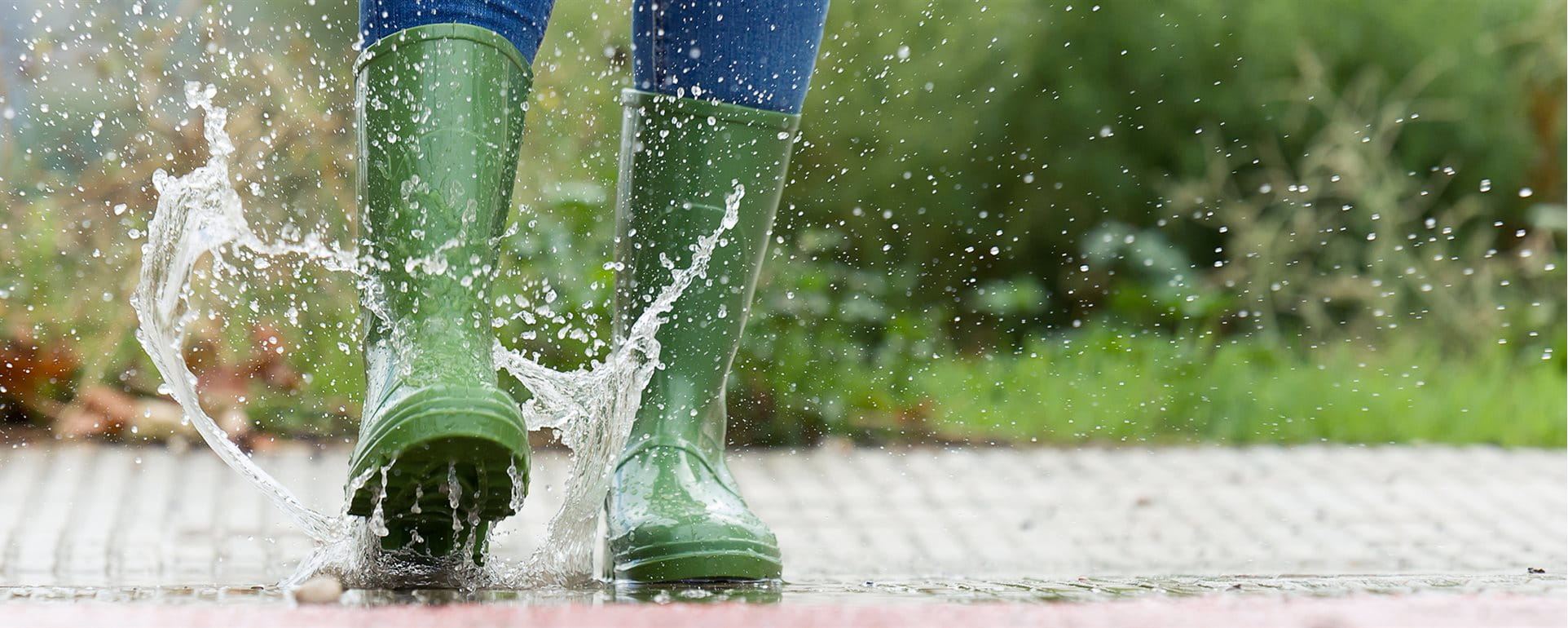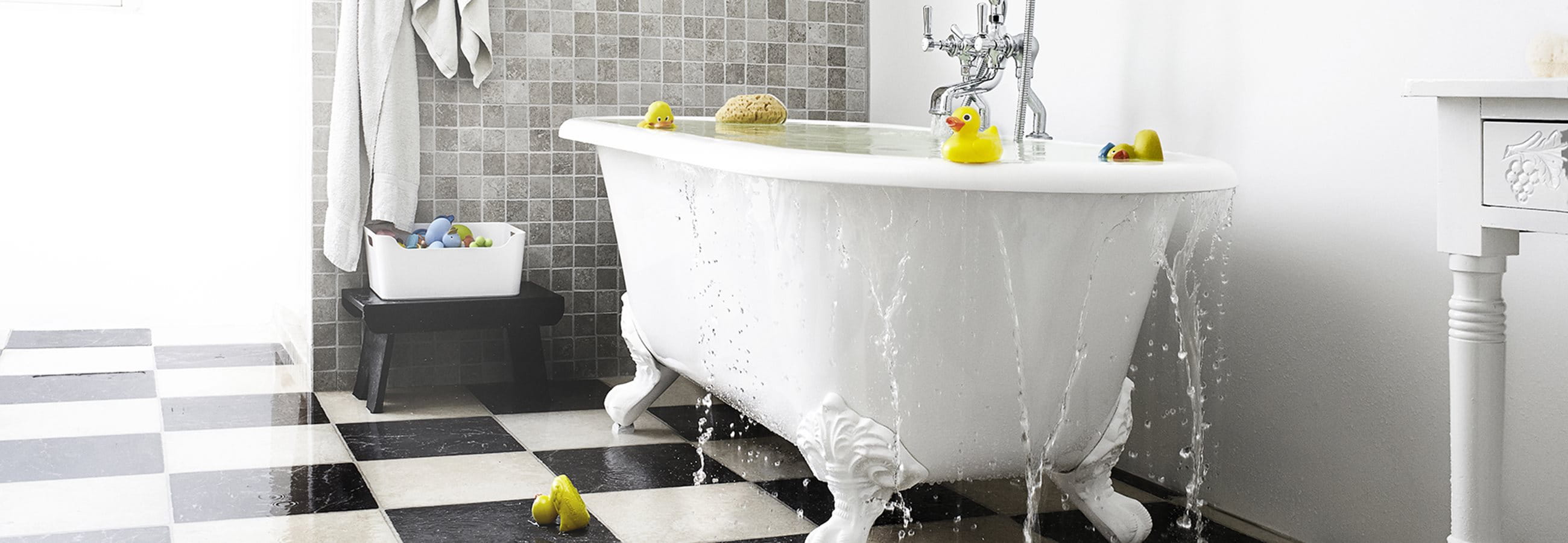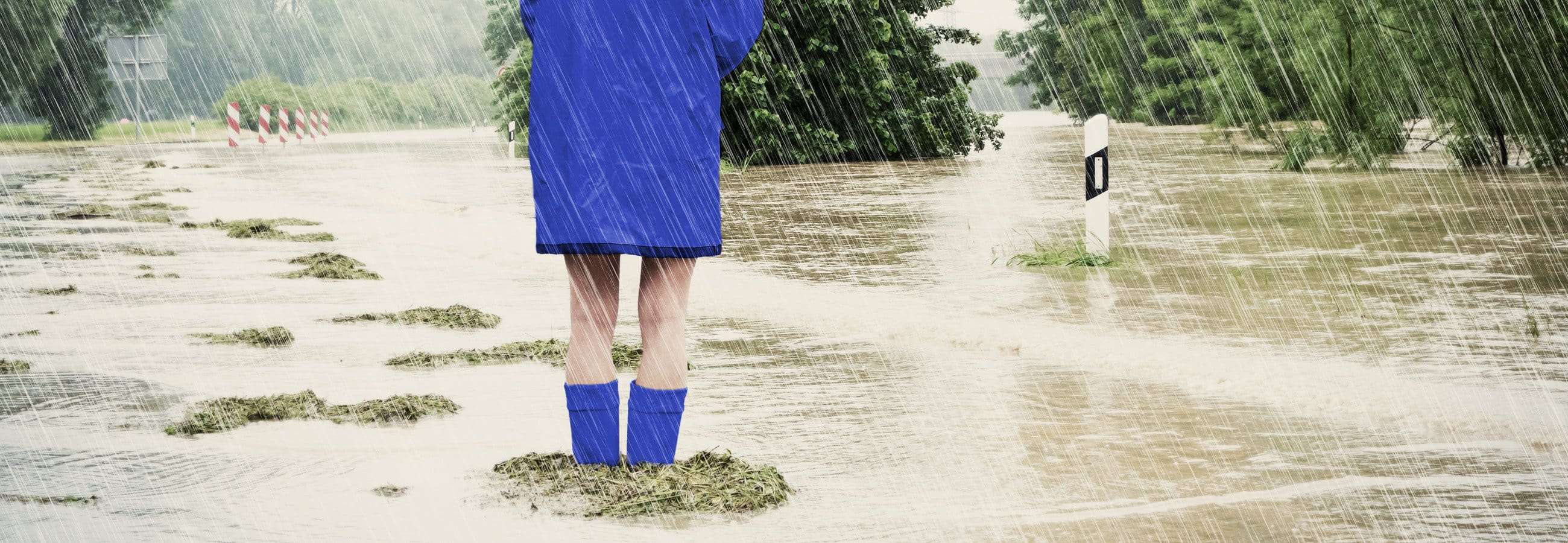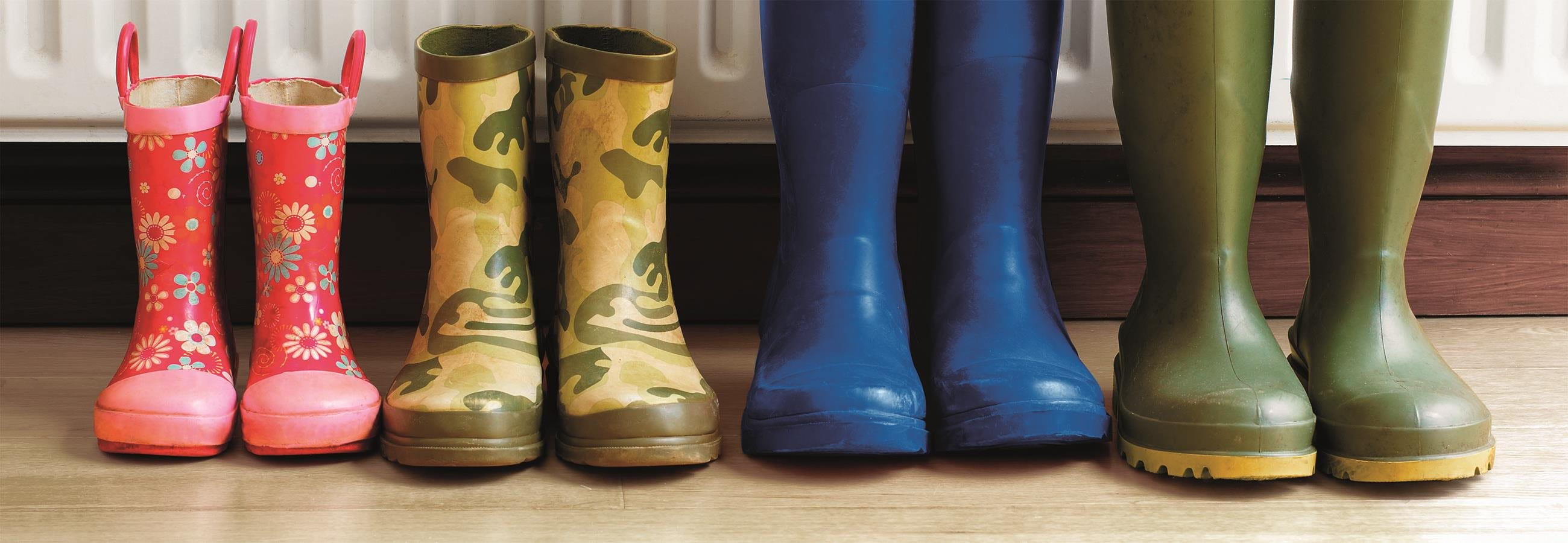According to an international research project by Vienna University of Technology, storms and flooding are expected to increase in future between Iceland and the Alps – also including Switzerland. The reasons for this are more intensive precipitation, wetter ground and torrential rain. You've almost certainly experienced it yourself: first it drizzles a bit, then the rain gets heavier and suddenly it starts bucketing down.
Torrential rain can pass within a few minutes. But the impact is often dramatic, as a great deal of rain falls within a short time and the ground usually doesn't have the capacity to absorb it. The consequences are rising water levels, rivers that overflow their banks as well as flooding, flash floods and landslides.
Torrential rainfall can affect anyone
Small flood precautions with a big impact
- In the event of a flood warning, empty at-risk cellars and garages or store objects at a safer height.
- If you can expect regular flooding, you should not store items at ground level but keep them slightly elevated, for instance on a pallet or on a homemade platform. Just 20 cm can make all the difference.
- Seal off possible water inlets.
- Turn off the electricity, water and gas in exposed parts of the building, as penetrating water can cause short-circuits that pollute water pipes and even lead to fires.
- Disconnect your electric vehicle in your underground garage from its charging point. An electric vehicle that is charging can endanger lives in the event of a flood – after all, water conducts electricity.
What should you do if your cellar is flooded?
If you are affected by flooding, you should keep a cool head and act quickly to stem the damage. However, only act if no people are in danger.
- Alert the fire brigade if necessary.
- Save what can be saved but be aware of your own safety – your life is more important than things.
- Create a list of the damaged items and take photos.
- Inform your insurer.
- Clean up, as mud and dampness after flooding can cause subsequent damage.
The right insurance in the event of flooding
If the contents of your home fall victim to flooding, contents insurance will pay for their replacement at the replacement cost – the deductible for damage caused by natural hazards is CHF 500 in each case. Companies are covered via the moveable assets component of their business insurance. If vehicles are damaged, the partial casco element of motor vehicle insurance will take over.
If a company is temporarily forced to cease operation following flooding, the additional "business interruption" component can absorb losses in turnover and even save a company's existence. For building damage caused by natural hazards, for example damp walls, buildings insurance will pay out. It is mandatory in most cantons.
Check your individual risk
Do you know how vulnerable your location is from torrential rain, storms and flooding? Using the natural hazard radar, you can check out if your home, rented apartment or company is in danger of flooding. In addition, you will also find the location-related profile for the risks of earthquakes, surface runoff, hail, storms and mudflows.
Test it out: enter your address and find out in just a few clicks whether your location is at risk and how you can protect yourself to avoid damage. Furthermore, we recommend that you check the insurance coverage for the building, your household contents insurance and your company insurance coverage at regular intervals.




